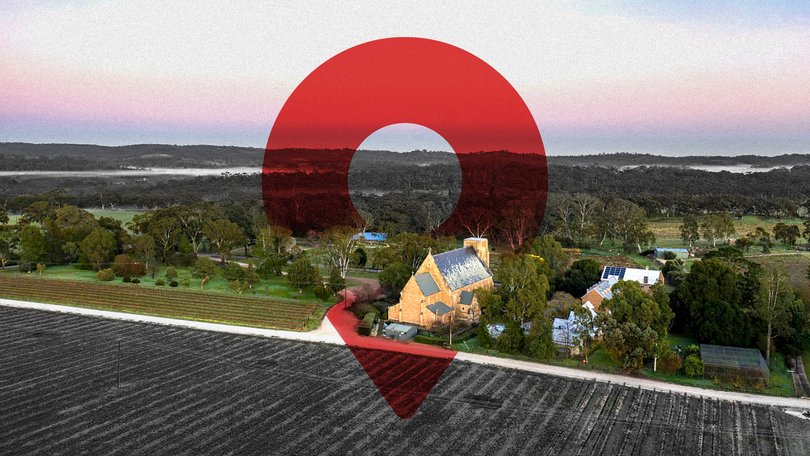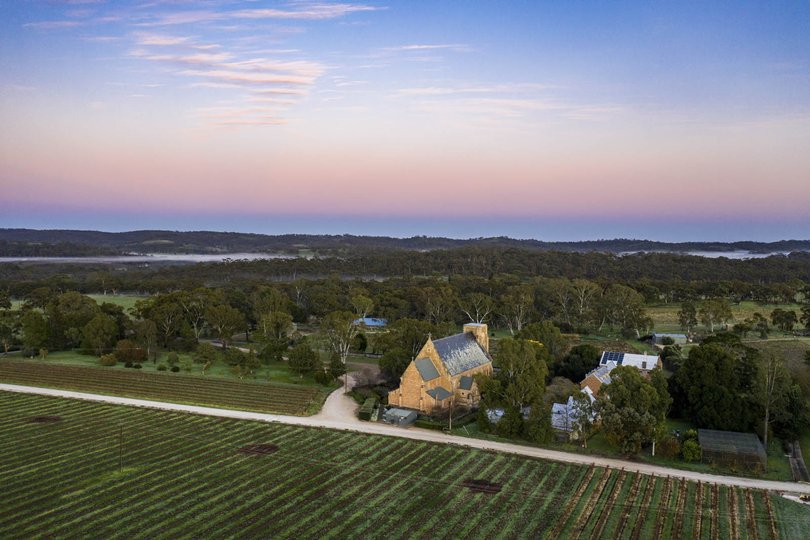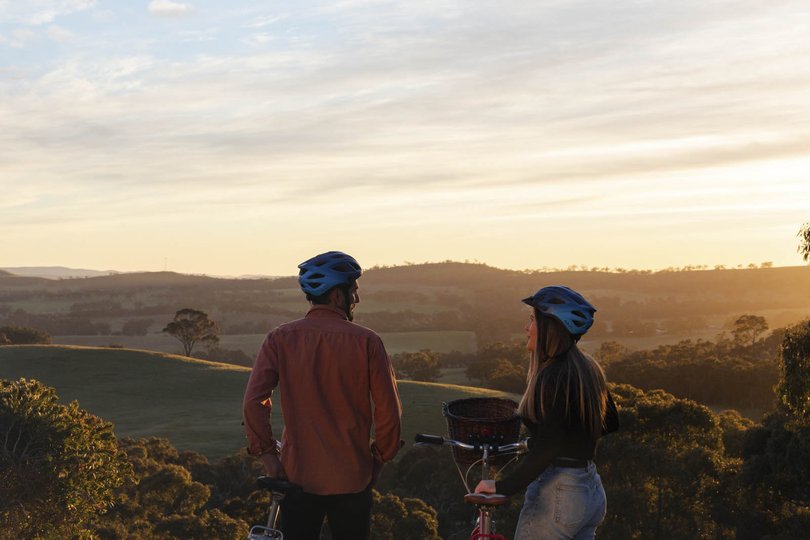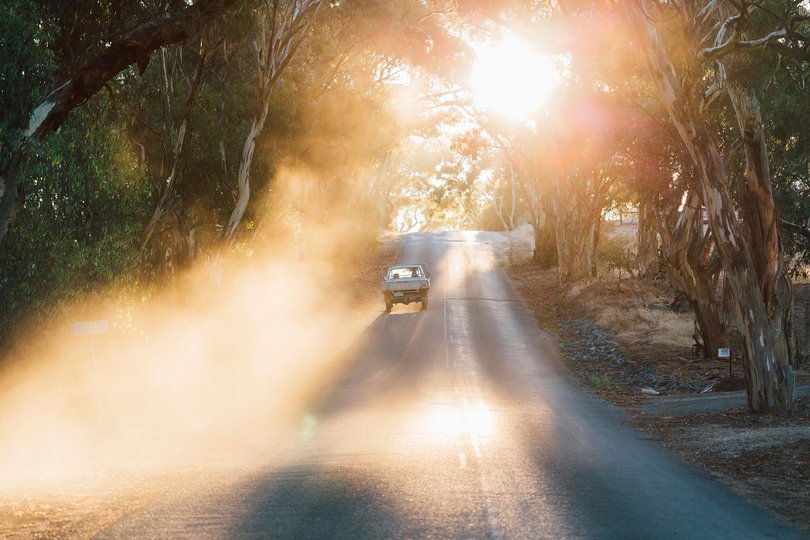Suburbiana Clare Valley: The intoxicating wine region that always calls you home

If we are all a kind of collage made from the places and times in which we live, then this is me.
I’m the kid who grew up in Port Augusta, where the desert meets the sea and my brother and I once got lost in the mangroves for a day and our parents didn’t realise we had gone.
I’m the same kid who was educated in Adelaide, surrounded by vineyards that got their roots under his skin and would eventually pull him into a life in wine.
Sign up to The Nightly's newsletters.
Get the first look at the digital newspaper, curated daily stories and breaking headlines delivered to your inbox.
By continuing you agree to our Terms and Privacy Policy.I’m the directionless young man thrown out of university for never going enough who moved to Sydney on a whim and in finding the place he thought he would call home forever, somehow found himself.
I was the disorientated dad who retreated to the Adelaide Hills with a daughter too young to understand where her mother had gone so suddenly.
And now I’m the man recalibrated and restored, sharing 20 acres with a wife and three kids, two dogs and a cat, five chickens, 17 guinea fowl and an albino peacock that shits all over the back deck.

There’s a kind of fermented inevitability about me ending up here.
This was the first wine region I ever went to, dragged along by parents who enthusiastically embraced the idea that getting sloshed among the vines could be re-framed as sophistication.
None of us could’ve known then that I would one day make it a career.
There’s a real human scale to the winemaking in Clare. It’s a community of mostly small, family owned wine businesses.
As a wine writer I spend my working life, if you can really call it that, wandering through wine regions around the world, but none resonate quite so deeply as the one I call home.
The Clare Valley is actually a network of three valleys sitting up in a plateau that rises a little higher than you think it might from the broad, open plains around it.
It’s a place where the Ngadjuri people would come to give birth and nourish themselves on the bounty of spring through to autumn before getting the hell out as the bitingly cold winter kicked in.
Where some wine producing places seem entirely shaped by our thirst, with vineyards stretching unbroken for miles, Clare’s viticultural pockets are scattered amongst scrubby bushland and golden fields.
There’s a real human scale to the winemaking in Clare. It’s a community of mostly small, family owned wine businesses.
The place makes a dry, linear style of riesling that is rightly celebrated around the world. No other grape better transmits the stories of the soils from which it comes. The fact that a wine grown in the richer red dirt around Watervale can taste so starkly different to one drawn from the hard, bony country around Polish Hill River will always fascinate me.
There’s a little place, not far from the Showgrounds, where the “CLOSED” sign has hung from the front fence for more than 20 years and yet pilgrims still come to take photos of that sign and wonder about what goes on at the end of that long driveway winding through towering gumtrees.
This place is called Wendouree and it makes some of the most highly sought wines in the country. It’s a place where not much has changed since the first wines were planted in the 1890s.
The only way to get them is by being on the winery mailing list. The only way to get on that list is to write a letter requesting inclusion.
And then you wait.
For the first few years you’ll get a letter around May telling you that sadly there will be no wine for you this year. It’s a courtesy that’s probably not really needed, but it’s a sign of the way the septuagenarian couple who run the place like to do things.
Eventually, patience is rewarded with an order form. There’s a colour-coded crayon mark in the corner of the page that represents the complicated mental algorithm that exists in the owner’s head which determines who gets what.

The internet has multiple chat groups dedicated to cracking what that code really means.
So what makes them special? If true greatness in a wine resides in its connection to place then the deeply structured, long-lived and intricately detailed reds from Wendouree may just be the greatest we make in this country.
They are instantly recognisable year on year and they taste like nowhere else. When you open one you pour out a postcode.
To me, they taste like home.
Wendouree is just of many places scattered throughout the valley that serve as gateways to the past.
A few miles down the road from my place sits a grander pile. It’s Martindale Hall, an imposing Georgian mansion cinephiles will recognise as the girls school educating Miranda and her cohort in Peter Weir’s film of Picnic at Hanging Rock.
But in the real world it remains a monument to one man’s desperate and ultimately failed attempts to impress a woman. Edmund Bowman travelled out from England to prepare a new life for his betrothed. He brought 50 tradesman out from England with him and built an estate featuring the 32-room hall, a polo ground, racetrack, cricket pitch and hundreds of acres of some of the finest land in the colony. When it was all finally done he returned to escort his beloved to the new world and a new life.
She came, endured one summer besieged by the flies and the heat, and returned alone on the first boat she could find.
Some say Edmund’s heart-broken ghost still wanders Martindale’s halls.
To the north-west of Martindale Hall is a place where a sun-struck Austrian priest saw a few rocky rises through bleary eyes and somehow thought of the seven hills of Rome.

At Sevenhill, the Jesuits built the first Catholic boarding school outside of Sydney that educated boys from as far away as Christchurch and Perth; a church that still serves the community today; and a winery to process the fruit from the vineyards they planted to produce their own sacramental wine.
When I was 13 and a student at the Jesuit school in Adelaide, we came here on our school excursion and the legendary winemaker Brother John May gave us all an obviously dry lesson on fermentation and winemaking.
Years later I was judging a wine show and saw the real impact of that lesson. Of the six judges there, five of us had gone to school together.
Give me the boy at seven and I will show you the booze hound.
Wine has taken me all around the world but something even more intoxicating keeps bringing me back here.
The sense that I am finally home.
